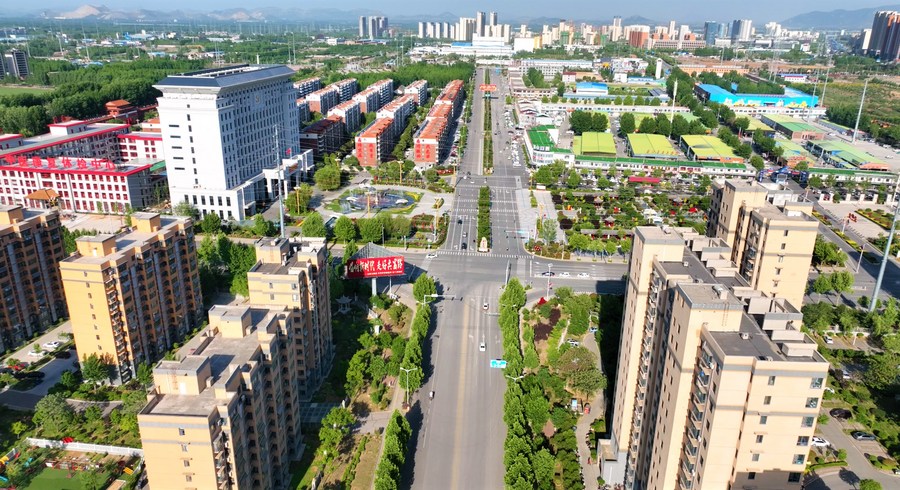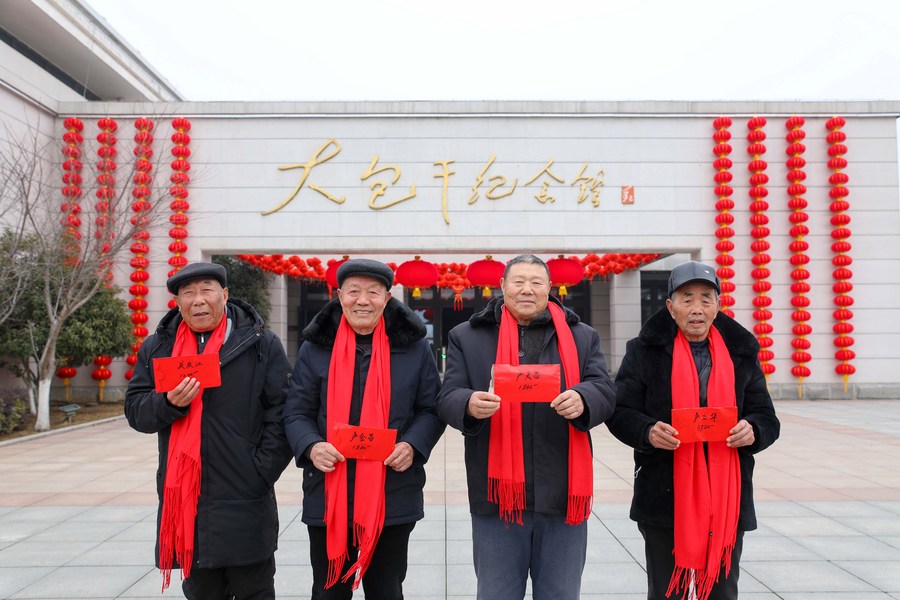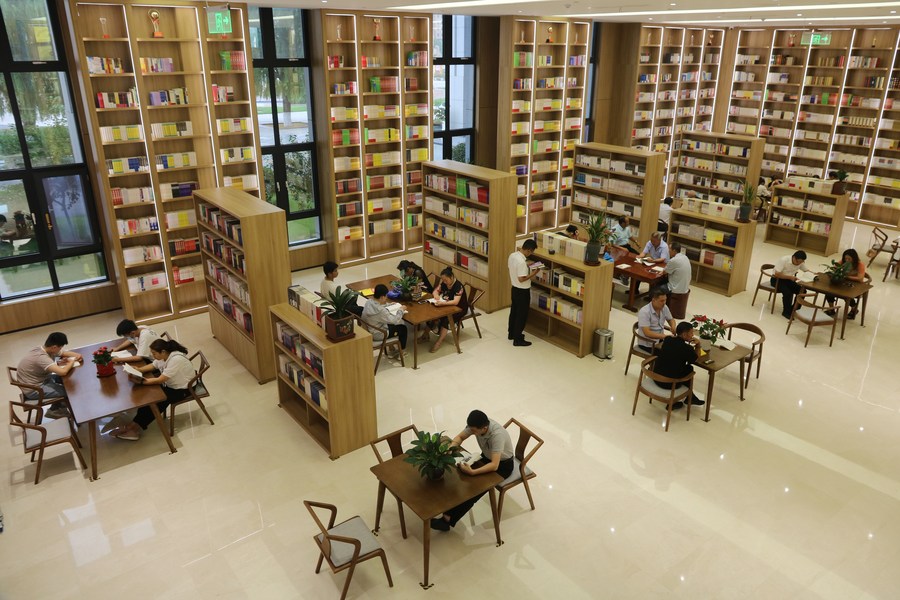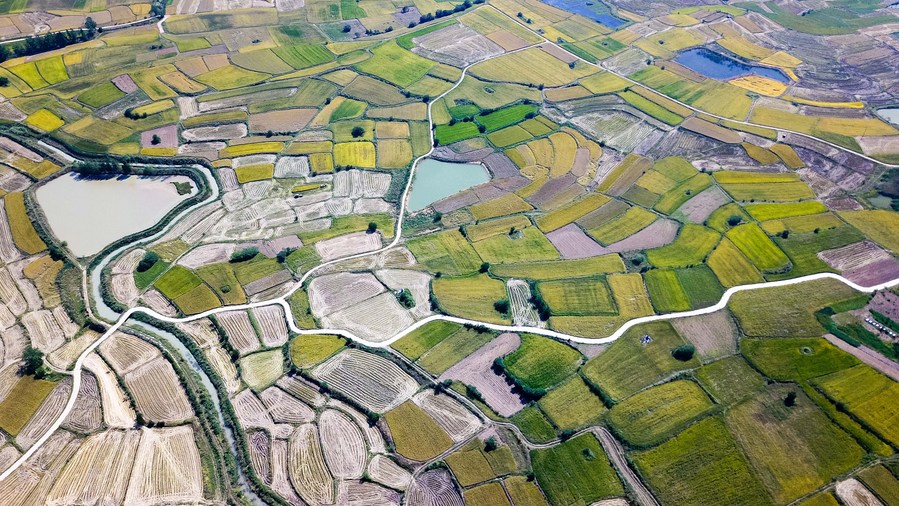* China aims to make decisive progress in rural revitalization and basically achieve modernization of agriculture and rural areas by 2035. Reform to improve institutions and mechanisms is deemed a source of impetus and vitality for this process.
* China is expected to continue to deepen reform of the collective property rights system and other rural fields to enable farmers to increase their income.
* The role of reform is also underlined in China's efforts to build up its strength in agriculture, which is part of the country's grand goal of developing itself into a great modern socialist country in all respects by the middle of this century.
BEIJING, Dec. 22 -- First-time visitors to Houbaligou Village might check their maps again just to make sure they are in the right spot, because this area looks a lot more urban than rural, with highrises lining broad streets, a spacious square dotted with green trees and fountains, and neatly built neighborhoods.
The village in east China's Shandong Province boasts an array of industries, including real estate development, education and commerce. Its fast development was a result of several factors, including adjacency to the county town and the ability to seize industrial opportunities, while deepening reform has also played a crucial role.
China aims to make decisive progress in rural revitalization and basically achieve modernization of agriculture and rural areas by 2035. Reform to improve institutions and mechanisms is deemed a source of impetus and vitality for this process.
Rural reform and innovation will be strengthened, according to the annual central rural work conference that concluded Wednesday.

This aerial photo taken on Aug. 19, 2023 shows a view of Houbaligou Village, east China's Shandong Province. (Photo by Zhang Meng/Xinhua)
FROM FARMERS TO SHAREHOLDERS
China has advanced rural reform across the board in the past decade, making breakthroughs in some key areas. The reform of the rural collective property rights system was one of the major tasks.
By verifying rural collective assets and allowing farmers to voluntarily turn their rights in collective assets into shares, this reform is aimed at protecting farmers' interests and improving the vitality of the rural collective economy.
After completing reform and setting up a shareholding cooperative in 2017, Houbaligou Village's collective assets have ballooned from 3.5 billion yuan to over 8 billion yuan (about 1.1 billion U.S. dollars) at present.
As shareholders, villagers have received dividends annually and their incomes have grown continuously. Employees working for the village enterprise also hold shares based on the length of their service.
"As shareholders, villagers and employees are all motivated to contribute to the village's development," said Yang Ruixia, a member of the village Party committee.

Villagers show the dividends they have received from the village collective earnings at Xiaogang Village in Fengyang County, east China's Anhui Province, Jan. 26, 2022. (Xinhua/Cao Li)
The reform also has a lasting influence on Luyuan New Village of the city of Qufu, the hometown of Confucius in Shandong Province. A collective economic organization, established as a consequence of the reform process, has supported villagers in opening more than 160 guesthouses to tap local tourism resources.
Kong Fanling, a 56-year-old villager, has turned her four-bed home into a guesthouse, which has the potential to bring in 60,000 to 70,000 yuan in revenue annually. Her family could only earn around 3,000 yuan a year from growing crops, which used to be their major source of income.
"We could have never imagined making a living out of tourism. Villagers used to leave for jobs in cities in droves. Now around two thirds of them have returned to the village," Kong said.
Nationwide, around 960,000 rural collective economies have been established since reform of the collective property rights system was rolled out in 2015.
China will continue to deepen reform of the collective property rights system and other rural fields to enable farmers to increase their income, said Zeng Yande, an official with the Ministry of Agriculture and Rural Affairs.

This photo taken on June 10, 2023 shows a reading room in Houbaligou Village, east China's Shandong Province. (Photo by Zhang Rui/Xinhua)
MODERNIZING AGRICULTURE
The role of reform is also underlined in China's efforts to build up its strength in agriculture, which is part of the country's grand goal of developing itself into a great modern socialist country in all respects by the middle of this century.
In a major institutional innovation in the past decade, China has allowed farmers to retain contract rights concerning their allotted farmland, while transferring management rights if farmers decide to lease the land to others.
This reform, together with the extension of the rural land contract by a further 30 years, has provided further assurance to farmers and helped accelerate farmland transfer, large-scale farming and development of a modern agricultural industry.
Thanks to the reform, profound changes have taken place in Xiaogang Village, the cradle of China's household contract responsibility system for rural land.
The village in east China's Anhui Province has developed about 870 hectares of high-standard farmland since 2018 by amalgamating small plots of land, 70 percent of which has been transferred for large-scale farming, said Li Jinzhu, first secretary of the village Party committee.
"Some families used to own a number of plots of farmland. Now with the small pieces of land forming larger ones, there are conditions suitable for improving infrastructure and developing modern agriculture," he said.
The village has attracted leading agricultural groups like the Beidahuang Group and the Anhui Agricultural Reclamation Group. The local agricultural mechanization rate has reached over 97 percent.
"Many of us did not expect this to happen five years ago. Now we have factory seedlings, machine transplanting, and drone pesticide spraying," Li said.

This aerial photo taken on Sept. 27, 2018 shows agricultural fields in Xiaogang Village, Fengyang County, east China's Anhui Province. (Xinhua/Zhang Duan)
Nationwide, the rate of mechanization in crop plowing, planting and harvesting had risen from 67.2 percent in 2017 to 73 percent in 2022. Helped by increased contributions from agricultural machinery and technology, China secured a grain harvest of over 650 million tonnes for the ninth consecutive year in 2023.
With reform and innovation of institutions and mechanisms, agriculture in China will see further improved industrial, production and business operation systems and increased land yield, resource utilization efficiency and labor productivity, said Zheng Fengtian, director of the Rural Development Institute at the Renmin University of China.










